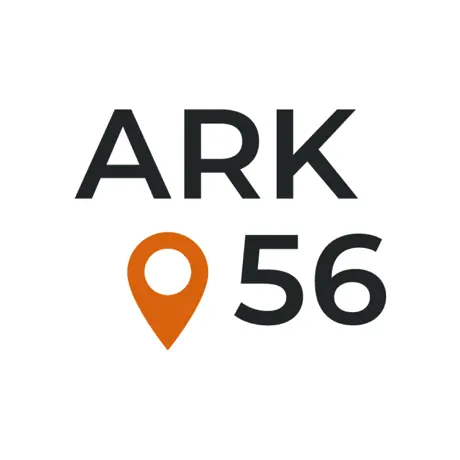Hanö i Höst & Vinter – Natur, historia och kultur
Images
An island for all seasons
Hanö is an island of contrasts – where nature, history and myth meet. Here you encounter the English Cemetery and the legacy of seafaring, the Dragon Mark and legends of giants and robbers, the hornbeam forest glowing in autumn light, migratory birds heading south, and seals basking on the cliffs even on cold winter days. Visiting in autumn and winter means experiencing the island in its barest form – still, dramatic, yet full of life.

The journey to Hanö
The ferry from the fishing village Nogersund runs all year, making Hanö accessible even when storms sweep across Hanö Bay. In summer the island welcomes around 30,000 visitors, but in autumn and winter the paths are quiet. You may feel as if you have the entire island to yourself, with only the sound of the sea and wind in the trees.
See Blekingetrafiken’s ferry timetable

Geology and landscape
Hanö is a residual mountain shaped in a tropical climate hundreds of millions of years ago. During the Ice Ages, the landscape was carved into steep bedrock cliffs in the east and north, while the west and southwest were covered by gentler moraine soils.
After the last Ice Age, beach ridges and fields of shingle were formed. At Fyrkullen, Hanö’s highest point at 53 metres, you can still see traces of the ancient Baltic Ice Lake. The shingle fields here were created 14,000 years ago, when only the island’s top rose above the icy waters. On the seabeds around Hanö, remnants of ancient forests can still be found in the form of stumps from times when water levels were lower.

Forests and meadows in autumn colours
Vegetation on Hanö has changed greatly. In the 19th century, the island was forested, but heavy grazing and logging left it nearly bare by the early 1900s. When grazing ceased in the 1950s, nature recovered, and today one of Sweden’s largest hornbeam forests grows in the southern part of the island.
In autumn the forest glows in yellow shades, while in winter it becomes light and bare, giving hikes a fairy-tale atmosphere. To the north lie open grasslands and rocky fields, and in the small wetlands species like the natterjack toad thrive. Hanö is also an important stopover for migratory birds, with large flocks passing in autumn.

Cultural history and the English Cemetery
Hanö has been used by fishermen since the Middle Ages and became permanently settled in the 1830s. At its peak, over 250 people lived here, but today only a few remain year-round.
One of the island’s best-known landmarks is the English Cemetery. During the Napoleonic Wars (1810–1812), the British navy used Hanö as a base. Fifteen British sailors were buried here, and the site is still visited by British warships paying tribute to their countrymen.
The lighthouse, first built in wood in 1869 and replaced by the current tower in 1906, still shines across the bay. In the harbour stands Bödeboden, a 1958 fisherman’s shed that today houses a museum on Hanö’s nature, culture and fishing history.

Places and legends
Hanö is also known for places tied to legends. From Fyrkullen you can descend to the boulder cave Rövarkulan, said to be a hideout for robbers. Next to it lies the Dragon Mark, a folded rock wall said to have formed when the island’s lighthouse was lit for the first time and a dragon crashed into the cliff.
In the southern forest are two hollows, Gamla Kar and Nya Kar, believed in folklore to be giant’s footprints. On the northern shore lies Bönsäcken, a shingle spit of millions of stones. Its direction and shape change with waves and currents, making it one of Hanö’s most visited spots.

Wildlife in autumn and winter
Hanö has rich wildlife year-round. Since 1956, fallow deer have roamed the island alongside roe deer. Among the birds you may spot eider, herring gull, great black-backed gull and razorbill. In autumn, large flocks of migratory birds pass through, and white-tailed eagles are often seen circling above.
In the sea around Hanö, seals are common and can sometimes be seen resting on the cliffs – even on cold winter days, binoculars will give you a closer look.

Hostel Hanö
Hanö is at its most tranquil when the last boat leaves and silence descends. In winter this stillness deepens. After a walk along the coast or birdwatching in the forest, warmth awaits at Hostel Hanö.
Here you can cook in the shared kitchen or retreat to a cosy bed.
The hostel is located in the old schoolhouse in the middle of the island and offers five rooms with a total of 20 beds, plus two cottages nearby. The main building has a fully equipped kitchen, two showers and two toilets. The cottages are perfect for more privacy – and pets are welcome there. All rooms are non-smoking.
In summer the garden offers space for play and relaxation with a grill, games and hammocks, but in winter it is the peace, the clear starry skies and the dramatic sunsets that draw visitors.
Vandrarhemmet Hanö

Tips for an autumn or winter visit
- Ferry: Departs from Nogersund all year, travel time about 30 minutes. See the Blekingetrafiken ferry timetable.
- Clothing: Bring warm, windproof clothes – the weather can change quickly.
- Food: No restaurant service in winter, so pack your own food and hot drinks.
- Gear: Binoculars are useful for spotting seabirds and seals.
- Excursions: Don’t miss the English Cemetery, the lighthouse, Bönsäcken, Rövarkulan and Gamla/Nya Kar.
Sources
Contact
Address
Blekinge Arkipelag Kurpromenaden 4 372 36 Ronneby
Email address
Team ARK56
Organization logotype




